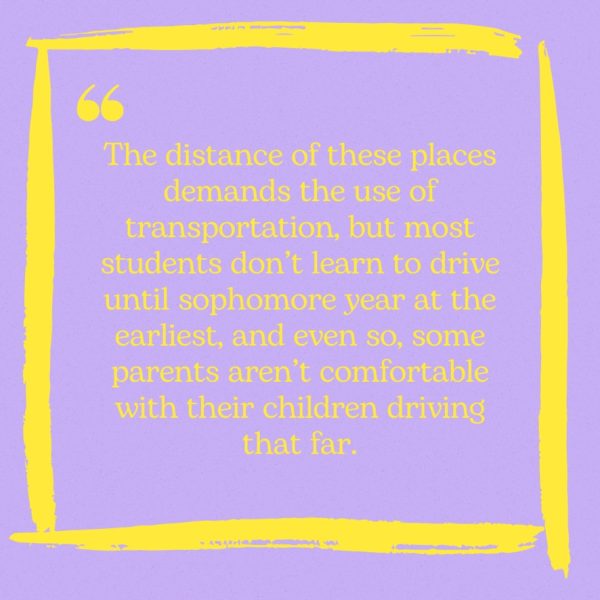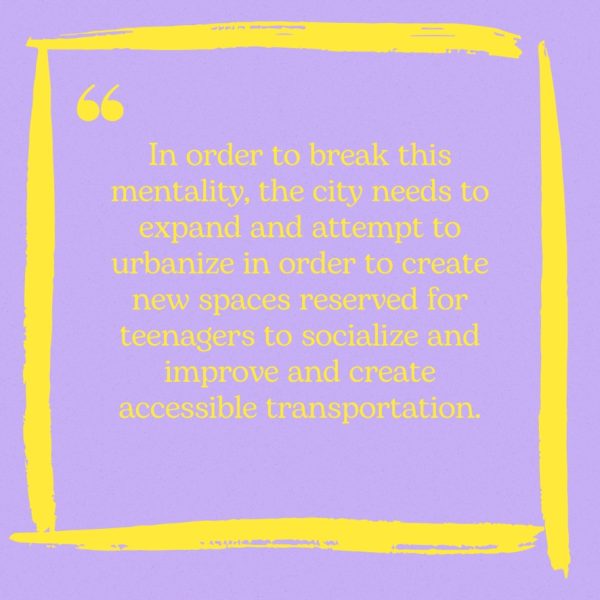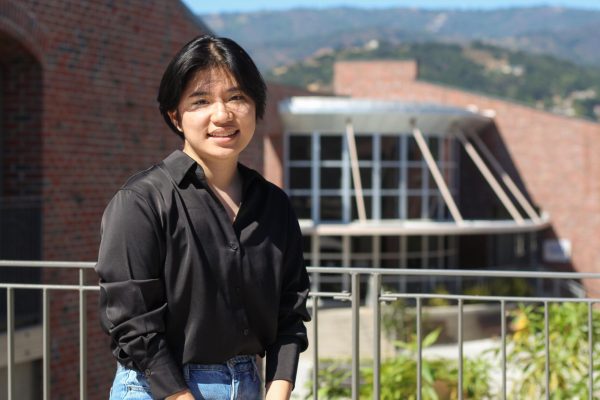Cupertino is known for its competitive schools and technological jobs that bring in a variety of diverse and highly educated people globally. With a last known population of 58,622 residents, Cupertino is known as the center of innovation in Silicon Valley. What it’s not known for is a wealth of different entertainment establishments.
A majority of the residents in Cupertino hold a bachelor’s degree or higher, and more than 40 percent were born outside of the United States. As a result, it’s not a secret that academics and hustle culture play such a large part in the lives of many MVHS students. The lack of places for relaxation and entertainment only serves to perpetuate this mindset — after all, Cupertino simply doesn’t offer that much to do outside the realm of school.
This problem is perfectly demonstrated by way of Cupertino’s “downtown.” Most cities have a downtown area that was organically developed around the central commercial area of the city. Most of these businesses, which can be anything from restaurants to bowling alleys, are centralized around one street that is dubbed “Main Street,” and this is where people generally go to have fun. Cupertino’s Main Street, meanwhile, isn’t actually centralized in a high-density commercial area because it was artificially created to resemble a downtown area. Its main offerings are restaurants and a lone optometrist office. And this perfectly showcases Cupertino’s problem: its lack of entertainment options that cater to a younger population. And while it is reasonable to an extent, seeing as Cupertino isn’t particularly big and that the original land was occupied by large patches of orchards and crops, Cupertino has to learn to change with the times.
Currently, the main source of entertainment is to go out and eat dinner, because if there are some things Cupertino has in spades, it’s SAT prep centers and food. But eating out is expensive, and regardless of how high the average earning median is in Cupertino, most students can’t order food every other day. Food, especially the lunch and dinner restaurants that are more readily available in Cupertino, is a pastime that better caters to adults with their own disposable income, but is not a viable option for many teenagers. Furthermore, any of the more affordable activities can only be accomplished outside of Cupertino: moviegoers have to go to the AMC in Sunnyvale, most shopping is conducted at Valley Fair in Santa Clara and brunch places are localized in areas like Los Gatos and Mountain View. These activities aren’t actually present within the city itself, but are the sort of activities that MVHS students tend to do for fun.

The distance of these places demands the use of transportation, but most students don’t learn to drive until sophomore year at the earliest, and even so, some parents aren’t comfortable with their children driving that far. While the city offers Hopper as a means of public transport around the city, there isn’t an easy source of cheap public transportation traveling outside the city and the city continues to push the problems to other areas without solving the issue itself, leaving students at the mercy of their parents’ free time and ability to take them places, setting limitations on their entertainment options.
It’s possible that the number of entertainment focused areas have decreased over the years because of a lack of interest. While it might seem as if this means students simply don’t need more entertainment spaces, it may be because there isn’t enough input from them. It seems that most public spaces like Memorial Park are built with young children and adults in mind — the playground engages the children, while the benches seat the adults watching them. Out of the 16 public parks in Cupertino, only 3 have basketball courts, all of which are half court, and none have any amenities that can’t be found at the local high school. Although Cupertino does have a Teen Commision Team, they seem to have limited reach, mainly implementing programs in schools. Perhaps something like adding ping pong tables or even a full size basketball court would make these outdoor spaces more youth-friendly.
In the meantime, students should also take the time to check out some of the more informal events Cupertino has to offer. The city holds a lot of notable annual and monthly activities, such as the annual Diwali celebration, Cherry Blossom festival, the Moon festival and more. De Anza Community College hosts monthly flea markets every Saturday and farmers markets every Sunday where many local residents come out to make purchases or set up their own stalls to sell.

However, the existing entertainment options for teenagers are still lacking, which decreases their ability to socialize as much, in turn negatively affecting their mental health and ability to maintain social relations. Most teenagers in Cupertino are swamped in school work and this is perpetuated by the lack of spaces to socialize in Cupertino, as many aren’t able to find a place to relax. In order to break this mentality, the city needs to expand and attempt to urbanize in order to create new spaces reserved for teenagers to socialize in order to improve and create accessible transportation.












